They called her Yatounde, the one who returned. Like her priestess grandmother Aloopho, who knew the secrets of the dance, Yatounde had dance in her blood. Her father had disobeyed his mother the priestess, by withholding the knowledge he had been told to pass on. Yatounde knew anyway, and at nineteen, went against family plans and became a dancer. Her father knew the time had come, that Aloopho had returned. By then the given name Germaine had stuck to Yatounde.

Yatounde (Germaine Acogny) at Ecole des Sables. ? Shahidul Alam/Drik/Majority World
She made us feel the moon, the stars and the sun. We stood on the bare rocks and soaked in the desert sun. She taught us to feel the strength of the skies above and the soil beneath our feet. They connected through our bodies and soaked away the poison from our skin.
Germaine had egged us on, squeezing movement out of our ungainly bodies. “It’s okay to make mistakes” she said. “Okay if you can’t make it. Okay to try.” She had wanted us to join in with the Sabar dancers in the village. We knew it was wishful thinking. From the small child barely able to stand, to the grandmother who danced with elegant grace, the bodies move in rhythm, the passion flowed. Never had I seen such exuberance, such joy of life. Music taking over so completely. But no, not even Yatounde’s persuasion could coax Senegalese rhythm into our bodies, our veins. But the vibrations reverberated in us long after we left. Allessio, from Triangle Arts, cried. The rest of us watched in awe.
[wpvideo gQjWRUfa]
Video of Sabar dancers. ? Shahidul Alam/Drik/Majority World
We had come together from Argentina, Bangladesh, Bolivia, Brazil, Cambodia, China, Germany, Kenya, Lebanon, Mexico, Netherlands, Tanzania and the UK, to the desert studios of Jant-Bi in Senegal. It was the network partners’ meeting of the Prince Claus Fund. We shared successes, talked of failure and fed off each other’s passion for the arts. Just being in this crazy, wild, gritty team energised. We were survivors and would survive together. Dancing under the desert sky was one of the many ways we came together.
Yatounde took us for a walk before sunrise. We walked in silence across the desert sands. The warm morning breeze drifted in from the sea. With the first sun rays lighting up the clouds we came to the Baobab tree. We circled the tree and soon it became part of us. It had stood there for a thousand years. Its hollow womb, the final resting place of the Griot, the village story teller.

Hollow interior of Baobab tree. We had entered through the hole on the bottom right. The tree was thirty three metres in circumference. ? Shahidul Alam/Drik/Majority World
The tree had a thousand stories to tell. While we had danced together earlier, this morning we danced on our own. As the sun rose from behind the distant hills, we found expressions to unite the sun, the sand, with the Baobab reaching out to the sky.

Baobab tree at sunrise. ? Shahidul Alam/Drik/Majority World
Our visit to the detention cells in the “House of Slaves” in Gor?e island, a short ferry ride from Dakar city, reminded me of the slave dug outs in Zanzibar. The “House of Slaves” now a UNESCO World Heritage Site, was built in 1780. The ten foot by ten foot cells held about fifty men. The women and the children, all separated, were in similar cells. They all stood naked and chained, waiting for the journey across the sea where some six million, sent from many such islands across Africa, would eventually die. There were no records of the ones who died on the journey overland. Force-fed to meet the sixty kilo minimum weight set by the traders, they ate and excreted standing in those cells. The ones who resisted, if left alive, were put in cells that were smaller, lower, darker. The dead were fed to the sharks. Some of the living became shark feed as well. Some of the women provided sex to the traders. For some, bearing mixed children was the route to salvation. Africa still bore the scars of their pain.

“The Door of no Return” was the exit point from the “House of Slaves”. Slaves were either shipped across the Atlantic Ocean, or fed to the sharks. ? Shahidul Alam/Drik/Majority World

Security corridor separating cells from outer wall of “House of Slaves”. Gor?e Island. ? Shahidul Alam/Drik/Majority World
As we walked out, numbed by the horror of it all, women with trinkets surrounded us. We were terenga (foreigners). The moneyed ones. They needed tourists to come to Gor?e Island. Tourists to see the spectacle. Buy souvenirs. “I give you good price” they all said. Some had mastered more sophisticated terminology, and some NGO jargon. They talked of their poverty, of their need, of our responsibility. “You are my human rights father,” Bijou said as she sold me a seed necklace, a basket of cloth dolls balanced on her head.

Bijou with dolls for sale. ? Shahidul Alam/Drik/Majority World
Ibrahim invited me to his grotto. A cave like corridor on the roof of the cells. He and a friend had set up a studio there. Ibrahim painted and composed music and shared his studio with a friend. He saw me not as a foreigner but as a fellow artist. He posed amidst his artwork. The gentle waves of the Senegalese shore still beckon me through the old seashell he gave as a parting gift.

Ibrahim in his studio. ? Shahidul Alam/Drik/Majority World
Agnesio lived in a house at the back of the church in the Mandingo village in Saloum. She invited me in as I photographed the graffiti on her wall. She didn’t speak my language, I didn’t speak hers, but she knew what she wanted. Pulling me to her room, she stood me against the wall. She then sat on the bed and held her hands together. I was to take a photograph of her praying. I had no way of giving her a print. We both knew I would probably never see her again, but this was a photograph that needed to be taken. Grateful that I had a digital display we shared the photograph. It was a specific image she was after and she directed the shoot until she was satisfied. She thanked me warmly as I left. I came back with an image. The picture she kept needed no pixels. It was etched in her mind.

Agnesio praying. ? Shahidul Alam/Drik/Majority World
Cheik Guaye waited outside Osman’s house in Medina, in Dakar. I was a prospective customer and sales were low on Sundays. I wasn’t going to buy his antiques, but we sat and chatted by the roadside anyway. He had been a student of philosophy at university, but had dropped out. The elder brother of nine children, he needed to earn so the others could study. Lacking the capital to buy the antiques himself, he sold them for a friend, living off the commission. Some months I’ll make 400.000 he said (about 600 euro), but other months there might be nothing. “What happens then” I asked. “We survive” he said. “we are survivors.” He had heard of Yunus and micro-credit. “Here they only give loans to those who have money” he said. While I admired Yunus’ achievements, I had met too many people who suffered under the weight of micro-credit, to see it as a cure-all. He had antiques to sell, I had a flight to catch. This was one discussion that would have to wait.

Cheikh Guaye outside Osman’s house in Medina. Dakar. ? Shahidul Alam/Drik/Majority World
There were many survivors in this land. Cheik had many dreams and few illusions. He wished to introduce foreigners to the arts of Senegal. To dancing, music and cooking. He had been trained as a hotel manager, but without connections he knew he would never get a job. “If the world was a fair place, Africa would never be in the state that it is. The slave traders have left, but the colonisation continues. Our leaders are no better. Many have robbed our land more than the white man.” But he was a pragmatist. “I don’t hold it against the tourists. Why should one be blamed for what one’s ancestors did? We need the foreigners. We forgive, but we do not forget.”
The night before we were to leave, as we gathered in Germaine and Helmut’s home, Kaolack a dancer of the troupe, and his wife Diarra, told us of the party they were going to that night. This was African life we hadn’t seen, and while we were weary, we decided to go. Directions were given. It was close to the headman’s house, and with only three thousand people in the village we were heading to, we were confident we’d find it. The stars were out and the milky-way shone brightly as we headed toward the drumbeats, but it was another Sabar we found ourselves in. While we realised we had come to the wrong party, it was still riveting. When we did go again in search of Kaolack and Diarra, the music led us to a third party. We discovered there were others, though Chez Paolo was where it really happened.

Dancers at first party. ? Shahidul Alam/Drik/Majority World

Dancer at first party. ? Shahidul Alam/Drik/Majority World

Max and Janine at Chez Paolo night club. ? Shahidul Alam/Drik/Majority World
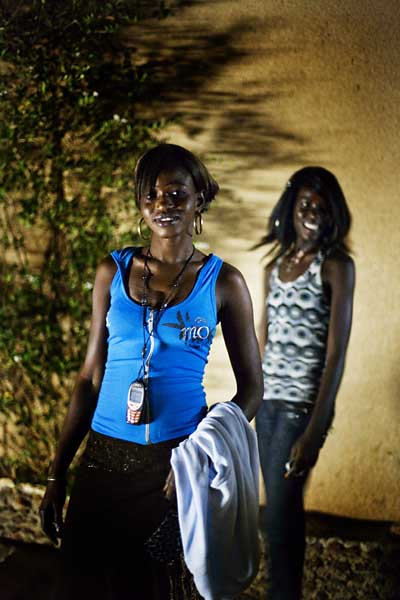
Late arrivals to Chez Paolo night club. ? Shahidul Alam/Drik/Majority World
Tired by now, I was ready to go back for I had wanted to return to the Baobab tree in the morning, but I was happy I stayed. For a people with such a destroyed past, for a continent with such a ravaged present, for there to be such celebration of life, for dance and music to be so integral a part of their being, told me more about Africa than I could otherwise have known. This was not the dark continent of my childhood books. The gaunt images of Darfur and Rwanda, the hollowed eyes of those dying of AIDS, the turmoil of conflict, were not what I saw around me. I saw proud people. Generous. Full of life. Of living. People who rejoiced in music and dance. I wondered how an entire continent had been transformed into an icon of poverty. I wondered what role image-makers played in perpetuating these stereotypes.
It was time to leave. On my last day, before the sun rose again, I went back to the Baobab. On my own this time. I needed to be alone with the tree. The giant tree with a thousand arms pointed up to the sky reminded me of Mike Royko’s epitaph:
“When my time comes, I hope no one drains my veins of their sustaining fluid and fills them with formaldehyde, then wastes me by putting me in a concrete box in the ground for eternity. Rather, just a simple pine box with an acorn on top of it. Find a place where a tree is needed and return me to nature. When the acorn grows, I can nourish it and give back in some measure what I’ve taken. Maybe someday kids can crawl in my branches or a raccoon might curl up in my trunk or the larks can sing out from my leaves. At any rate, I would rather let an oak tree be my epitaph than a marble slab be my tombstone.”

Baobab tree. ? Shahidul Alam/Drik/Majority World
The Baobab did inspire me, but it was not death I was thinking of, Africa made me want to dance. We went to Medina in the afternoon where Osman, another dancer in the troupe, lived. His extended family lived in this poor part of Dakar. It reminded me of homes in the old part of Dhaka. The walls were decked with photographs of religious leaders the family were murids (disciples) of. We weren’t surprised when one of Osman’s friends came to invite us to another street party. The drummers were in the middle of the street, with the dancers in a circle around. It was a frenzied affair.

Dancer in streets of Medina. Dakar. ? Shahidul Alam/Drik/Majority World
Dressed to kill, the women taunted and flirted with the drummers as the impossible rhythm mesmerised us. The balconies of nearby apartment blocks quickly filled. Cars realising the streets had been taken over by a dance found other routes. No questions asked. There was a wedding in the next street, prayers in the third, and just jubilation in another. Life was being lived.
On my way back to Dhaka, I imagined the shackles around the slaves on Gor?e Island. But I also remembered Ibrahim and Agnesio and Cheik. Each had found a way to shake off the chains of their ancestors. This was an Africa that would stay with me. For they had taught me to forgive but not forget. For I had danced amidst the Baobabs.
![]()

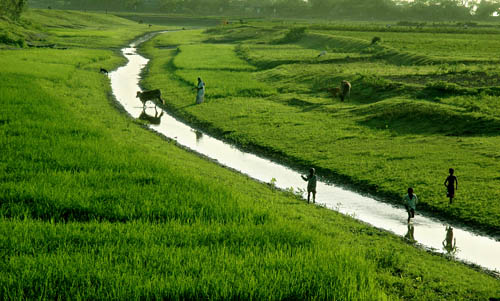
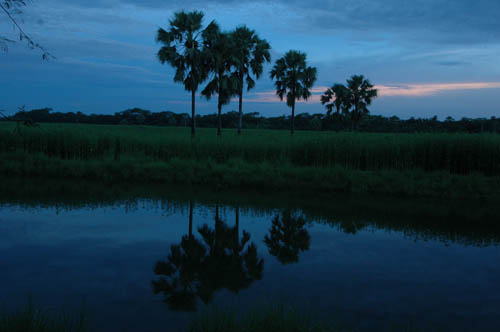

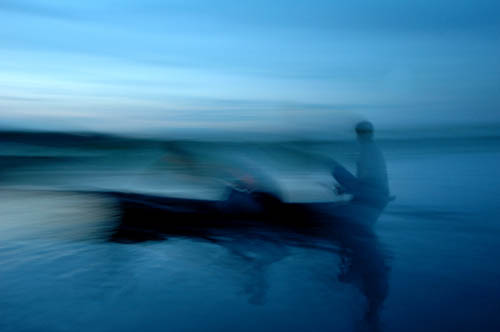
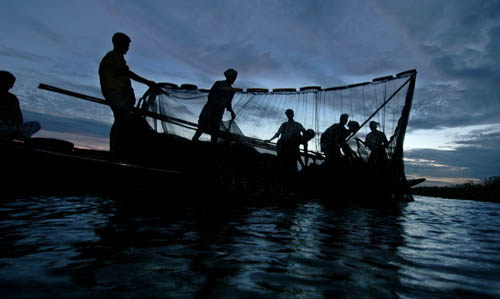
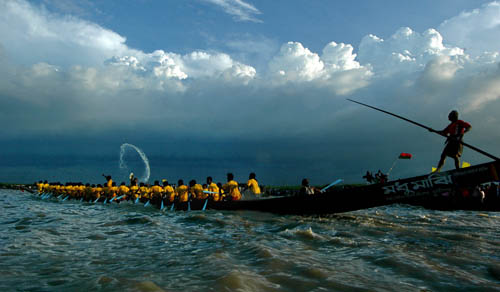
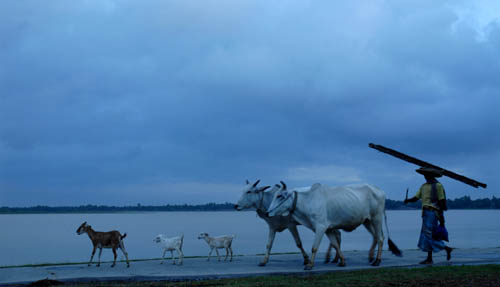















 ? Shahidul Alam/Drik
? Shahidul Alam/Drik ? Saiful Huq
? Saiful Huq